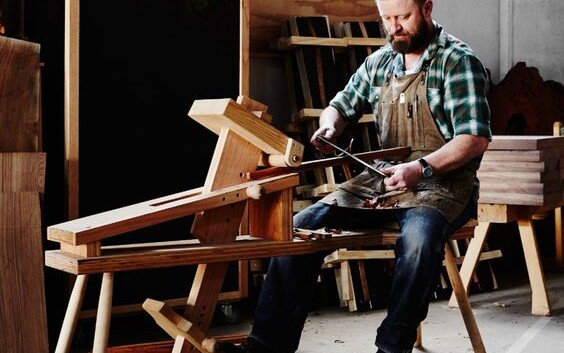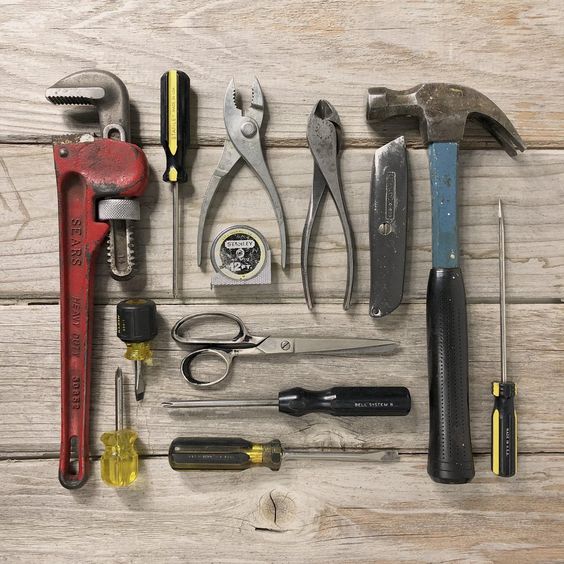
Setting up the perfect Carpentry Workspace hinges on creating an environment that cultivates efficiency, organization, and most importantly, safety. Whether you’re a seasoned woodworker or a beginner, the significance of a well-planned workspace cannot be understated. It’s not just about aesthetics; it’s about building a space that enhances productivity and reflects the precision and detail that carpentry demands.
Key Takeaways:
- Workspace Layout: Designing a layout for optimal workflow and safety.
- Tool Organization: Keeping tools accessible and maintained for efficient use.
- Safety: Implementing safety measures to prevent accidents.
- Lighting: Ensuring ample and proper lighting within the workspace.
- Materials Storage: Effective storage solutions for various wood types and other materials.
Table of Contents
Planning The Layout

Before constructing or reorganizing your workspace, good planning is essential. The layout of your workspace should be thought out carefully, considering your most common workflows. Identify the carpentry projects you undertake most frequently and ensure the layout supports these activities with ease.
Create clear paths for moving materials and projects throughout space without obstruction. This not only makes working more straightforward but also helps avoid accidents.
The Workbench: The Heart of Your Carpentry Workspace

A sturdy and spacious workbench is the centerpiece of any carpentry workspace. It should offer ample room for your projects, with easy access to your most commonly used hand tools and a selection of quality lumber.
Additionally, the height should be comfortable to prevent strain during long periods of work.
Tool Accessibility

Organize your tools based on frequency of use. The most frequently used tools should be within arm’s reach. Shelving, pegboards, or cabinets can help keep things orderly and easy to find.
For power tools, consider ease of access but maintain a safe distance from your main working area to avoid potential hazards.
Safety Measures
Safety should be your number one priority when setting up your carpentry workspace. This includes proper storage for sharp tools and using organization systems like shadow boards to quickly spot when a tool is missing and, potentially, misplaced in a hazardous location.
Familiarize yourself with carpentry safety fundamentals to create a harmless environment.
Ample Lighting

Good lighting can prevent accidents and lessen eye strain. It’s vital to have both ambient lighting for general visibility and task lighting to illuminate the specific areas where detailed work takes place.
Storage for Materials and Supplies
Your workspace must have designated areas for different wood types and other materials to protect them from damage and to keep your space organized.
Use vertical space for lumber storage, and smaller compartments or bins for fasteners and hardware.
Tool Maintenance and Care

Maintaining and caring for your tools is an element that feeds back into the efficiency of your workspace. Dull blades or improperly calibrated tools can slow down your work and compromise quality.
Consistent tool maintenance care keeps your workspace functioning efficiently and safely.
Organization Systems

Use tool chests and cabinets to store tools not only for organization but to protect them from dust and moisture. For hand tools such as chisels and planes which require sharp edges, protective sleeves or racks can prevent accidental injury when retrieving them.
Designated Cleaning Area
Dedicate a section of your workshop for cleaning, where you can have all your maintenance supplies at the ready. This area should be separate from your main workbench to keep sawdust and debris away from your projects.
Knowledge and Skills

Even the best-designed workspace is incomplete without the necessary know-how. Understanding and implementing basic principles such as carpentry math basics, measuring and marking correctly, and mastering the use of essential tools like saws all contribute to your efficiency and success.
FAQ
How big should my workbench be?
The size of your workbench should be based on the scale of projects you typically handle, the size of your workspace, and how much surface area you need to work comfortably.
What are the most important safety measures to implement?
Always wear protective gear including safety glasses, ear protection, and a dust mask. Keep a fire extinguisher nearby, ensure all tools are in good working condition, and follow correct procedures when handling them.
How can I maintain good air quality in my workspace?
Install a dust collection system and ensure your workspace is well-ventilated. Regularly clean to minimize sawdust and debris.
How should I store my power tools to keep them in good condition?
Store power tools in a dry, dust-free environment, ideally in their original cases or on shelves where they don’t risk being dropped or damaged.
What’s the most efficient way to organize my carpentry tools?
Categorize tools into groups based on function and frequency of use. Keep those most commonly used within easy reach and the rest stored but clearly labeled to find quickly when needed.

